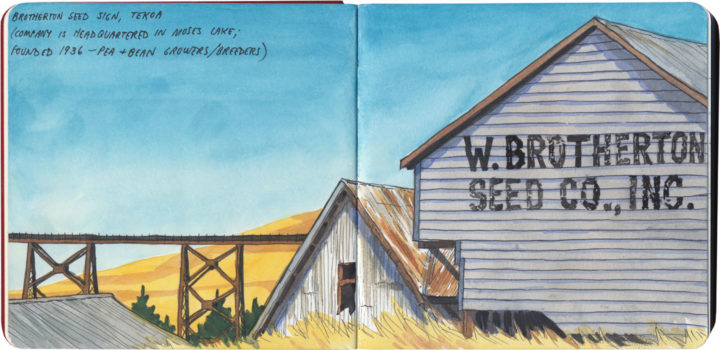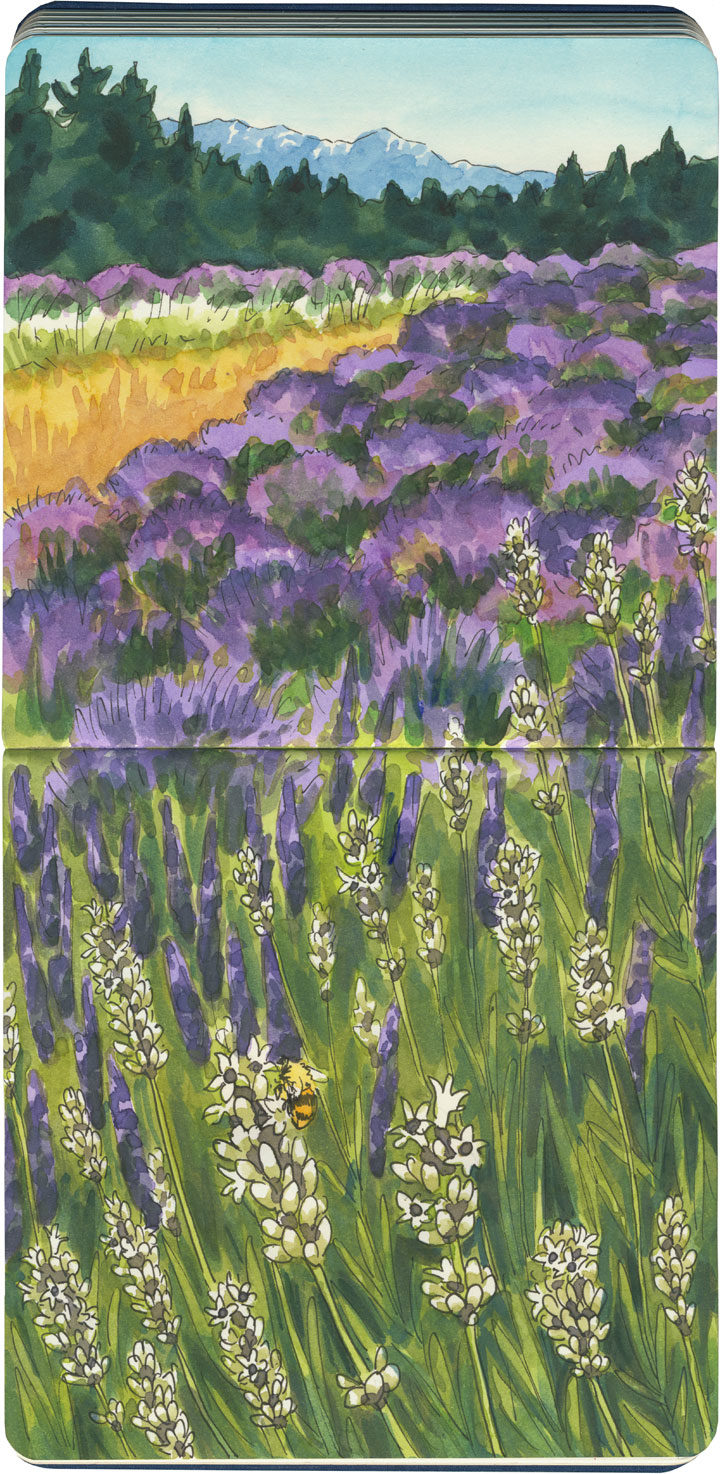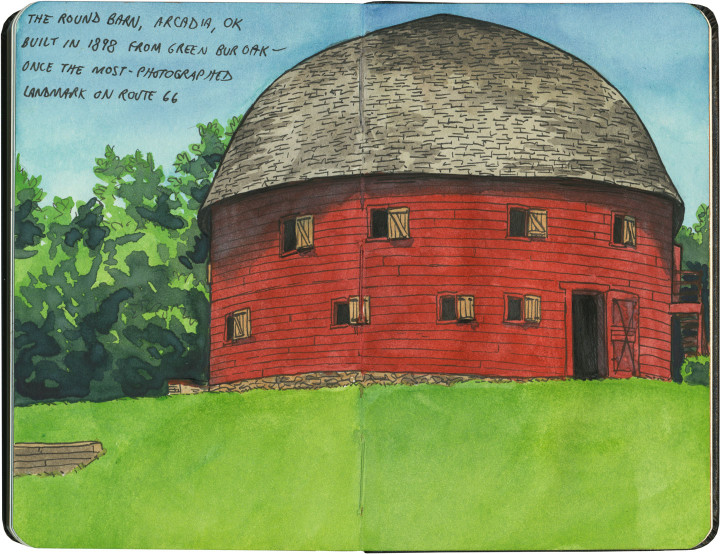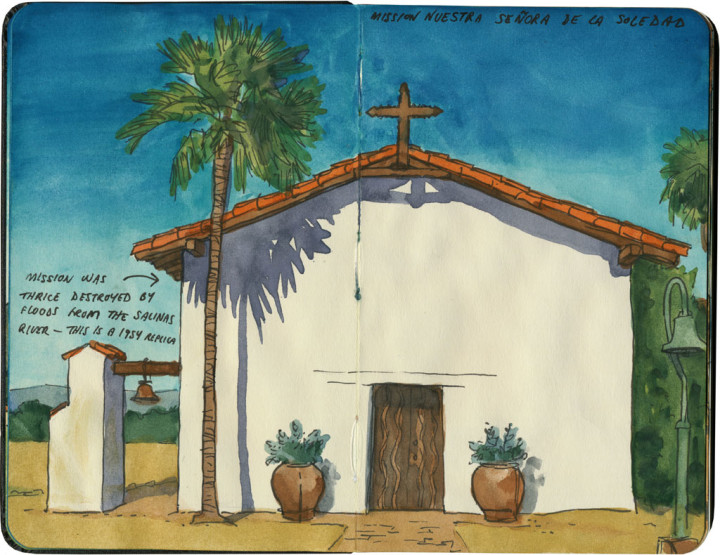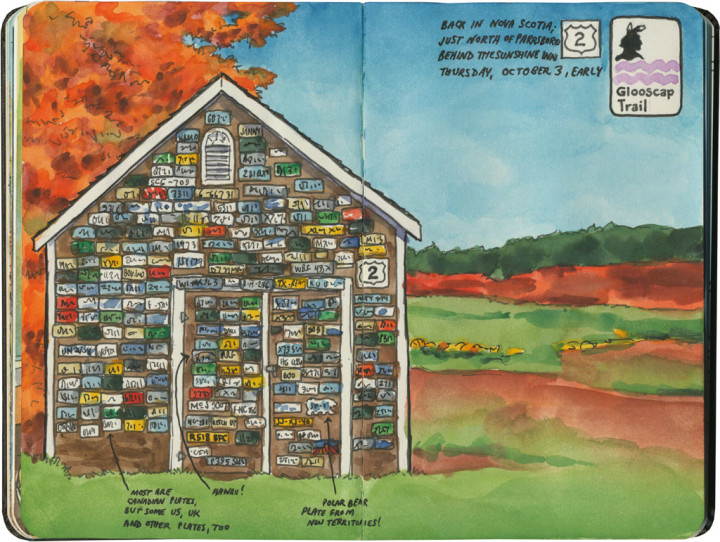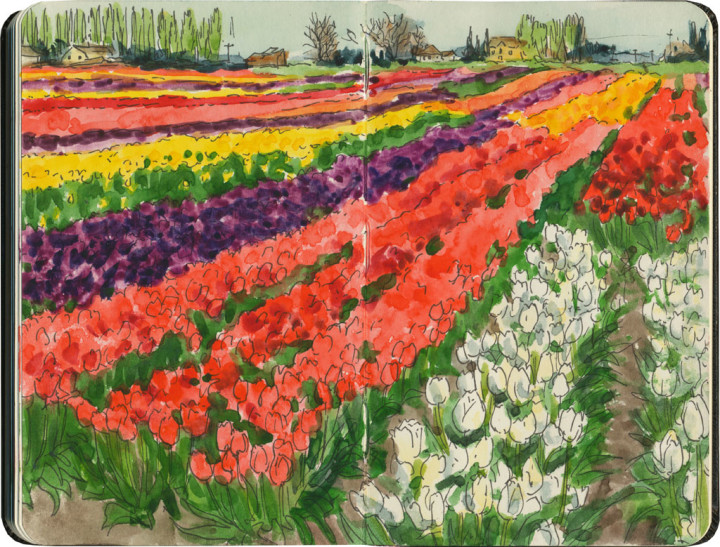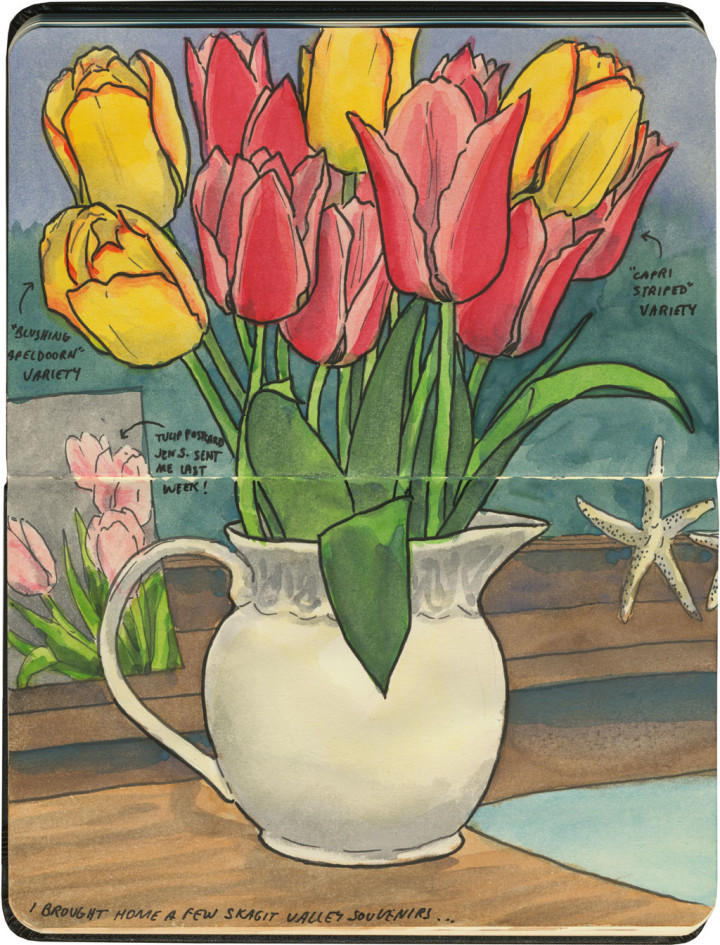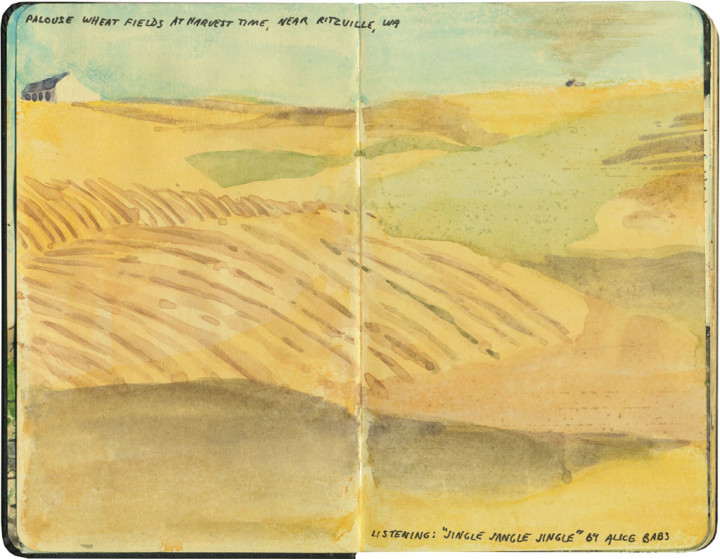Earlier this year I received a grant to travel to the Palouse region of southeastern Washington and sketch the changing seasons there. I’m sure I’ll be posting more about this in future, as there’s a lot to say and one post can’t possibly hold it all. But just as my sketching trips were my introduction to the region, this post will act as a gateway, with more to come later.

What first attracted me to the Palouse was learning about its vast, treeless, otherworldly hills—not your average rolling hills of wheat, but enormous 300-foot-tall landmasses, each carpeted in endless grain, with thin ribbons of road snaking between and around them. You already know that I have a thing for treeless landscapes, and lots of experience sketching them—but despite weeks of research and poring over very detailed maps in my gazzetteer, I just wasn’t prepared for what I’d see in person.

And I figured out pretty quickly that no matter what drawings I managed to make, I was pretty much destined to fail from the outset. It’s just not possible to do this place justice, to get it down on paper with any measure of accuracy or truth. The scale alone is utterly mind-boggling—and then there’s the fact that around every curve is another perfect composition, just taunting me and my puny, weak, human artistic limitations.

Still, it was thrilling to take a stab at it—over and over again, with the luxury of plenty of time to keep trying. In the end I spent two weeks there (one week in May, when the crops were young and green, and another at harvest time in late August) and logged a total of over 4000 miles of road.

And best of all, I can’t wait to go back—heck, I can’t wait to polish off this big pile of unfinished sketches I have waiting for me in my studio. The Palouse is a place that gets under your skin and lodges there forever. The only cure is to keep revisiting it again and again, both in the flesh and in memory. So don’t be surprised if you see a lot more wheat sketches in future: I’m just getting started.
Save

